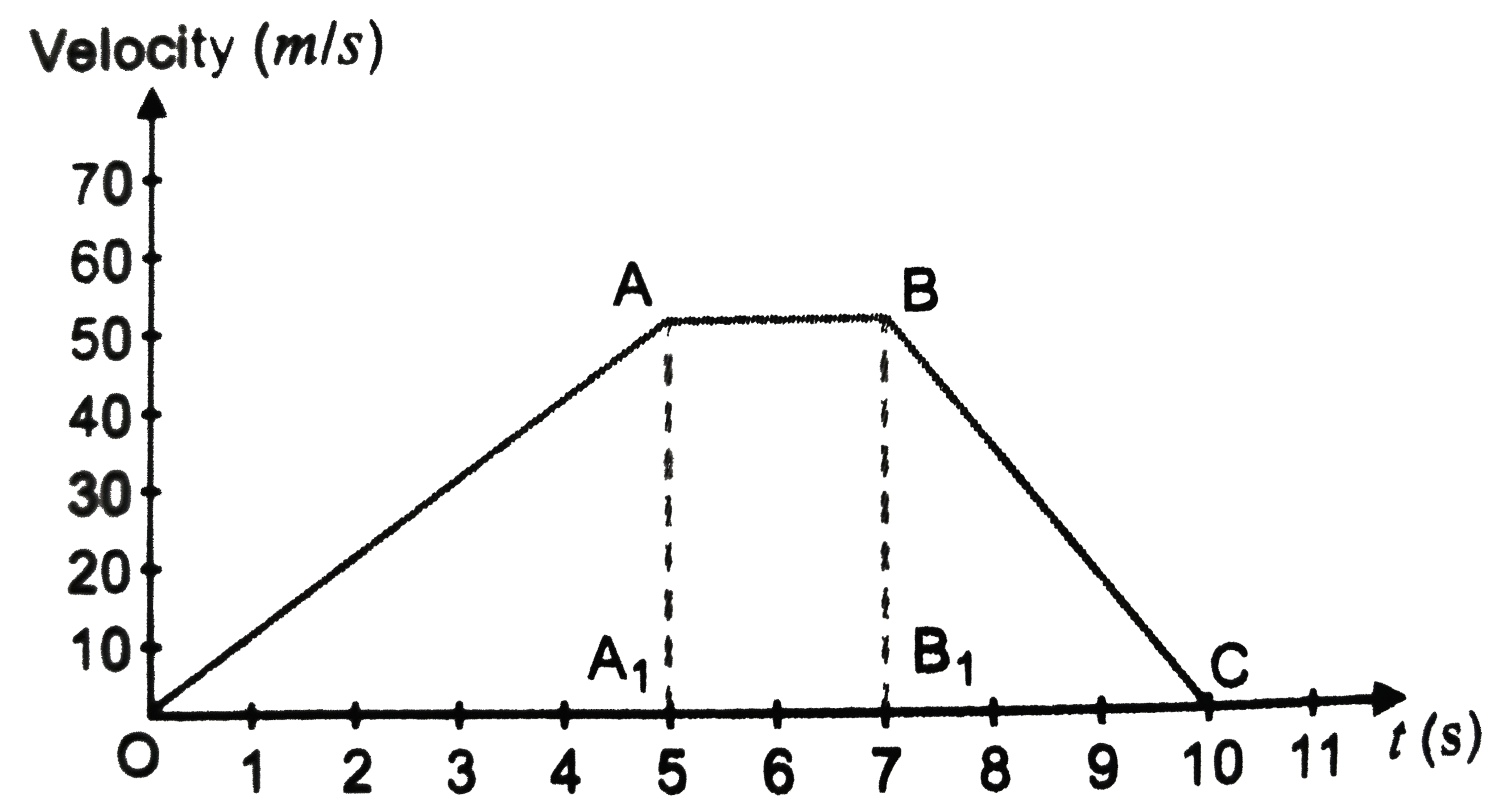A body starting from rest acclerates uniformly along a st. line , at the rate of 10ms−2 for 5 s.Itmovesfor2 swithuniformvelocotyof50 ms^(-1).Theitrηrdsuniformlyandcomes→rest∈3s. Draw velocity-time graph of the and find the total distance travelled by body.
Taking the motion of the body from 0→5 seconds wehave<br>u=0, v=? A=10 ms^(2) , t=5 s.
As, v=u+at
:. u=0+10×5=50m/s
The velcity-time graph of the motion to the body is as shown in Fig. 2 (b) .15.
 .
.
Total distance travelled by body during motion
=area of traphizium OABC
12(OC+AB)×∀1
12(10+2)×50=300m.
Similar Questions
A body starts from rest and travels a distance S with uniform acceleration, then moves uniformly a distance 2S and finally comes to rest after moving further 5S under uniform retardation. Find the ratio of average velocity to maximum velocity :
View SolutionA body starts from rest and travels a distance S with uniform acceleration, then moves uniformly a distance 2S and finally comes to rest after moving further 5S under uniform retardation. Find the ratio of average velocity to maximum velocity :
View SolutionStarting from rest, a car movies with uniform acceleration and attains a velocity of 72 km hr^-1 in 20 s. It then moves with uniform speed for 25 s and is brought to rest in 10 s under uniform retardation. Find the total distance travelled using velocity-time graph.
View SolutionA car starts moving along a line, first with acceleration a=5m//s^(2) starting from rest then uniformly and finally decelerating at the same rate till it comes to rest. The total time of motion is 25s . The average speed during the time is 20m//s . The particle moves uniformly for (2.5x) second. Find the value of x .
View SolutionDraw (a) v-t graph, (b) a-1 graph for a body which accelerates uniformly from rest, then moves with uniform velocity and finally retarded uniformly.
View SolutionA body, initially at rest, starts moving with a constant acceleration 2 ms−2. Calculate : (i) the velocity acquired and (ii) the distance travelled in 5 s.
View SolutionA body moves from rest with a uniform acceleration and travels 270 m in 3 s. Find the velocity of the body at 10 s after the start.
View SolutionA train starts from rest and accelerates uniformly at a rate of 2 m s^(-2) for 10 s. It then maintains a constant speed for 200 s. The brakes are then applied and the train is uniformly retarded and comes to rest in 50 s. Find : (i) the maximum velocity reached, (ii) the retardation in the last 50 S, (iii) the total distance travelled, and (iv) the average velocity of the train.
View Solution
